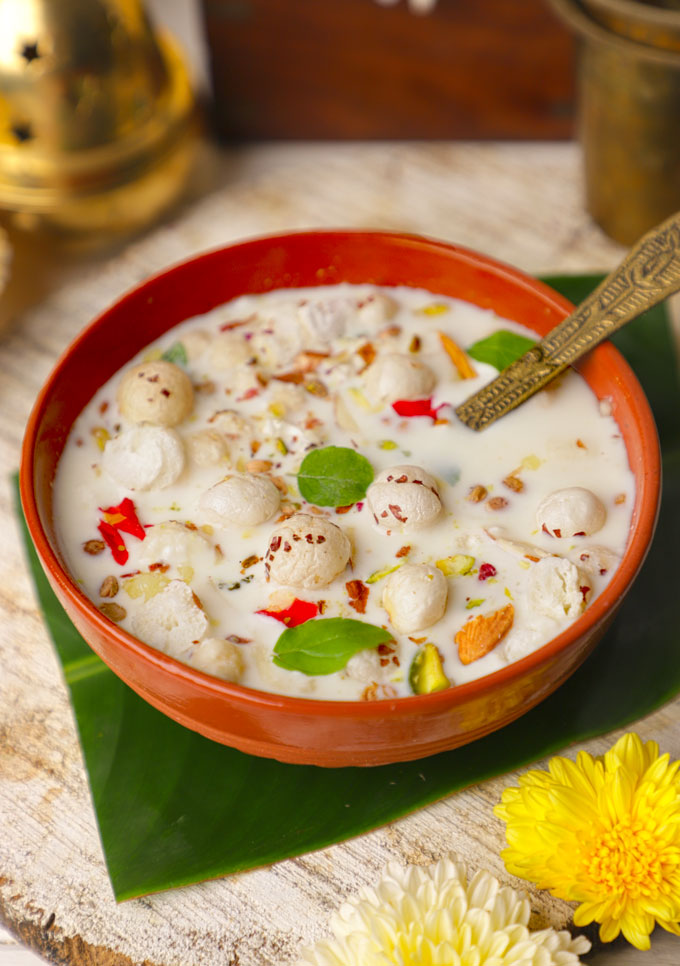01/7Panchamrit and its importance

Panchamrit is one drink that can be found in every Hindu ritual. After a yagna, after aarti or even after some simple morning prayers, Panchamrit is consumed during or after concluding every ritual in Hindu families. For many, Panchamrit is a sacred elixir. Made with 5 ingredients (Panch) and considered holy (Amrit), drinking Panchamrit is said to make a devotee pure, closer to divine and conclude the ritual taking place.
Here we list a few reasons as to why Panchamrit is made and consumed during religious ceremonies.
02/7Milk

Milk is the primary ingredient of Panchamrit and represents the highest level of purity and sustenance. Even without being a part of the Panchamrit, Milk, especially cow milk, is considered the best in Hindu religion and practices. Milk is often associated with the divine mother, representing her nurturing and compassionate nature. Traditionally, it is believed that only cow milk should be added to Panchamrit and its incorporation in the drink is a symbol of nourishment of the soul after a successful ceremony.
READMORE
03/7Yogurt

Yogurt, or Dahi, is another important ingredient of Panchamrit. Similar to milk, dahi too symbolises purity and preservation. In Hindu practices, Dahi holds a significant place in rituals and offerings to deities. In fact, during the month of Sawan, dahi and milk is the primary offering to Lord Shiva.
In the Panchamrit, from a health perspective, dahi is a probiotic and in religious beliefs, it is believed that Dahi reduces Vata Dosha in the body.
04/7Honey

Honey, famous for its sweetness and healing properties, also holds a sacred status in Hindu rituals and Ayurvedic medicine. Honey is considered to be the best medicine for vitality and longevity, and is seen as a symbol of sweetness and prosperity.
In Hindu culture, it is believed that honey is associated with the divine, often depicted as an offering to appease gods and goddesses.
05/7Ghee

Ghee, also added in Panchamrit, is famous for its purity and nourishing qualities. In Vedic traditions, ghee is offered as a sacred oblation to the fire god Agni, symbolising the transformation of offerings into divine blessings. Its inclusion in Panchamrit signifies the offering of oneself with utmost purity and devotion, seeking divine grace and blessings and a call to the Gods for blessing with strength and and victory.
06/7Sugar

While the tangy flavour of Panchamrit comes from the dahi, sugar balances it with the sweetness. Traditionally, mishri was used instead of sugar, but today it is substituted with raw sugar instead. Its presence in Panchamrit is like letting God know about your desire for divine blessings and asking him to sweeten your life and infuse it with joy.
07/7Regional variation – Tulsi leaves

In some regions, the Panchamrit also has a sixth ingredient, Tulsi leaves. Tulsi, also known as holy basil, holds sacred importance in Hinduism for its purifying and spiritual properties. Tulsi leaves are a symbol of purity, protection, and spiritual awakening. In Hindu rituals, Tulsi leaves are offered to deities as a mark of devotion. Their inclusion in Panchamrit makes the drink even more purifying and divine. Tulsi leaves in Panchamrit are believed to bring protection from negativity, and divine grace of Gods.





